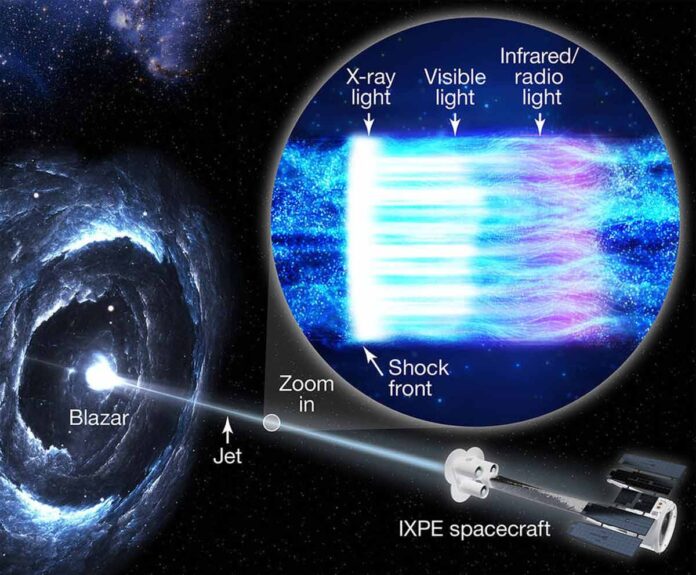Blazars, which are among the brightest and most energetic celestial objects, are made up of a supermassive black hole. It feeds off material swirling around it in a disc, creating two powerful jets perpendicular to the disc on each side.
The Imaging X-Ray Polarimetry Explorer (IXPE) of NASA has assisted astronomers in solving a decades-old mystery. The mystery about how particles in these jets are accelerated to such high energies.
“We’ve finally solved a 40-year-old mystery. We finally had all of the puzzle pieces. And the picture they created was clear”-Yannis Liodakis, astronomer at FINCA, the Finnish Centre for Astronomy affiliated with ESO, is the study’s lead author.
IXPE was used in the new study to point to Markarian 501, a blazar in the constellation Hercules. Markarian 501 was observed by IXPE for three days in early March 2022, and then again two weeks later. In the meantime, astronomers used other space and ground-based telescopes to collect data on the blazar in a variety of wavelengths. It includes radio, optical, and X-ray.
“Researchers discovered that X-ray light is more polarised than optical light, which is more polarised than radio light. However, the direction of the polarised light was the same for all wavelengths of light observed. And it was also aligned with the direction of the jet “NASA issued a statement.
The team compared their data to theoretical models. They discovered that it most closely matched a scenario in which a shock wave accelerates the jet particles. A shock wave is created when something moves faster than the speed of sound in the surrounding material. Such as when a supersonic jet flies by in our Earth’s atmosphere, according to NASA.
The active black hole system will be watched to see if the polarisation changes over time.

